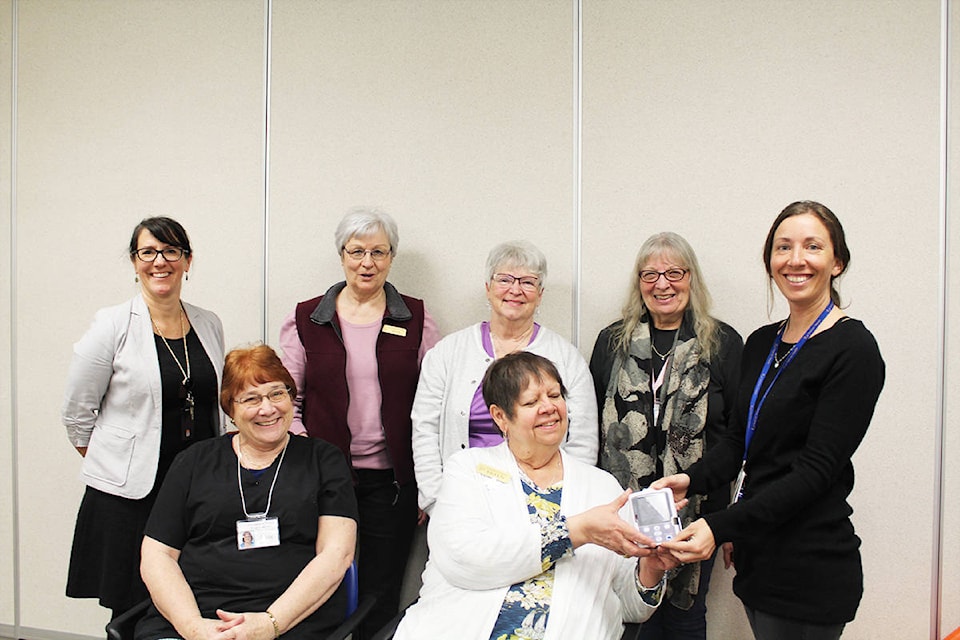Executive members from the Clearwater and District Hospice Society presented a new piece of equipment for home care use in the area at Dr. Helmcken Memorial Hospital last week.
The Continuous Ambulatory Delivery Device (CADD) was handed over to Michelle Stuttard, health services manager at the hospital, and works by continuously releasing a safe amount of pain medication to a patient as needed.
“It makes the patient’s life more comfortable and makes the staff’s life so much easier,” said Stuttard.
“This particular machine will be designated for staff who fall under our home health program; that can be everyone from someone who needs wound care or just had surgery, or maybe someone in the palliative hospice program who are near end of life, and this really makes that stage more comfortable.”
The CADD is about the size of a cell phone and is attached to the patient with pump settings controlled by the health care team to prevent an overdose, and are set to every hour, 24 hours a day.
The recently donated pump cost about $3,550 and was funded by the Clearwater and District Hospice Society through it’s Memory Lights campaign as well as community donations.
Cory Flear, a registered home care nurse hired by Interior Health, was on hand for the donation and demonstrated how the CADD pump works while fielding questions from members of the Hospice Society.
“The programming is simple to do and you can make a lot of different changes; we can program it to continuously deliver a medication and there’s also a function where you can hit a button and it gives you an extra dose,” said Flear.
“A lot of the old pumps didn’t have that, and then there are some security devices in there too.”
Some of the security features include varying lock out functions, so the care provider can make sure the patient doesn’t accidentally change the programming or deliver too much medication, and there are also alarm features that sound when the batteries get low, if there’s a bubble in the tubing, or if the medication bag is getting low.
“Normally the way it works is they’ll have a continuous flow rate, then they’ll get an extra four doses an hour, but there’s a 15 minute lock out period in between each extra dose,” said Flear.
“So even if they hit this button six times, they only get that one dose because it maxes out; it’s also really easy for us to come back the next day and read the stats, so we can get a really good idea of how many times they’re using that button, then we know that we might need to increase their daily continuous rate.
“It gives you really good graphs, numbers and charts and stores all that info for you.”
Other benefits include the fact it can remain attached to the patient for up to a week, saving the need for multiple needle shots, which can be painful and it also allows patients to spend more of their care at home with family, rather than in a hospital bed.
“And for the person using it, to feel like you have that control over some of your pain management, it’s really important for people.”
